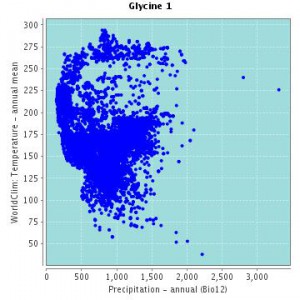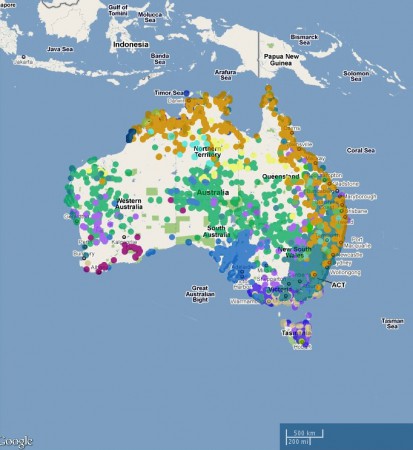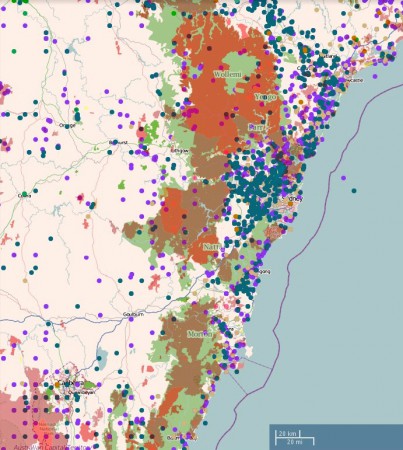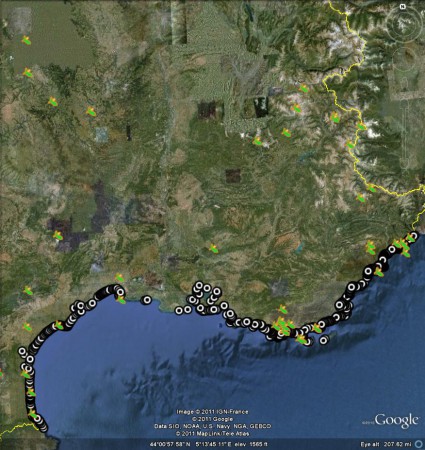I finally got around to having a go at the Atlas of Living Australia. Very nice. You can make, and download images of, pretty maps of species distributions, Glycine in this case.
And you can mash that up with lots of different environmental layers, such as protected areas, as below.
There are nifty spatial analysis tools built in, to help you predict species distributions based on climate, for example, or explore the range of adaptation of a taxon. You can contribute to the data through citizen science projects. And much more. Well worth exploring.
What you can’t do — or at least I couldn’t find a way of doing it — is export the species distribution data to a kmz for use in Google Earth. Something I’ve complained about before for other biodiversity portals. Maybe someone out there will tell us why that is. 1
One final thing. It’s a great idea to feature a number of “themes” on the atlas website, to get people started. At the moment it is things like wattles, “iconic species” and ants. Why not crop wild relatives?


